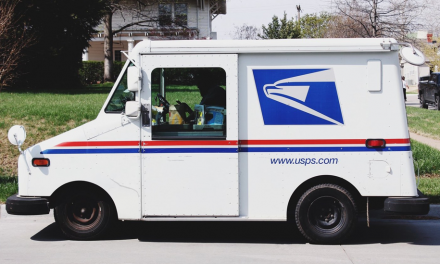
USPS losses up 51%, to $11.6bn for first nine months of 2012
The US Postal Service has lost $11.6n so far in the first nine months of its 2012 fiscal year – including a whopping $5.2bn in the third quarter alone. The first three quarters of the year, up to the end of June, saw USPS increasing its losses by 51% compared to the same period in 2011.
The world’s biggest postal operator said today that much of the year’s loss was taken up by payments it is required to make to the federal government, but which it is refusing to pay.
USPS defaulted for the first time in history at the start of this month, declining to make a $5.5bn payment for its legal obligation to pre-pay future retiree healthcare liabilities.
Unless the US Congress – which is currently crippled by partisan in-fighting – makes a sudden move to adopt postal reform legislation, USPS will also default on a $5.6bn payment at the end of next month.
In the third quarter, USPS said $3.1bn of its $5.2bn loss was from the prefunding requirement it is refusing to pay, but is nevertheless required to record in its balance sheet.
The Postal Service is currently operating with very low levels of cash reserves, in part thanks to its $13bn government borrowing limit, with a recent audit suggesting by October it could be down to its last $100m, with the US mail requiring around $1.3bn a week to operate.
At a Board of Governors meeting today in Washington DC, the Postal Service said it would not have the financial resources to operate as it is forever, but insisted that Congress would never allow the situation to get to the stage where the US mail is disrupted.
Hopes are that if Congress cannot get postal reform agreed this fall, legislation will be forced through during the “lame duck session” between the November elections and the start of the next official session of Congress in January.
Q3
During the third quarter of the year, the Postal Service did see some very positive signs in its package shipping business, which acting chief financial officer Steve Masse said had offset three quarters of the quarter’s decline in its traditional letters business.
USPS express and package shipping services achieved a 9% revenue growth during the quarter, to $3.3bn revenue for the three months up to the end of June, with volumes up 5.2% of 43m pieces.
But total mail volume dropped to 38.5bn pieces for the quarter, down 1.4bn on the same period in 2011, or by 3.6%. The USPS money-maker First Class Mail saw its volumes down 4.4% as more Americans make use of electronic alternatives.
Overall, revenue declined $153m (less than 1%) to $15.6bn for the quarter, but expenses grew by 10.2% or $1.9bn to $20.8bn.
Masse said efforts to cut costs within the Postal Service network have seen net operating expenses down $600m during the first nine months of fiscal year 2012, with costs down $14bn a year over the past five fiscal years.
Nevertheless, he said USPS “urgently” needed legislative changes to restore short-term liquidity.
“We continue to manage our liquidity to ensure we have the cash resources to pay our employees, pay our suppliers and ensure we continue to deliver the mail,” Masse said.
Consolidation
During today’s board meeting, Postmaster General Patrick Donahoe said the Postal Service’s sweeping network changes were going “smoothly” at present.
USPS is in the process of closing 48 of its 461 mail processing plants across the country this summer, and is set to close 92 more facilities in early 2013.
Donahoe said of the first 48 planned closures: “They are pretty much wrapped up now, and will be wound up by the end of the month – it’s all going very smoothly.”
Plant consolidations will cease from September to December during the peak mailing season, but will resume in January, he said.
“So far it is going very well and we’re expecting it to continue going well,” he said. “With this, we are taking out $2bn worth of cost reductions (per year).”
The Postmaster General said the phasing in of new mail service standards as of last month had so far proved “seamless” for mailers because the changes were well communicated beforehand.
The changes have been made to allow for the consolidation of the mail processing network, and see the First Class Mail service changed from a largely overnight service to a two-day service except locally to mail processing plants.
Donahoe also noted at today’s board meeting that after a “busy summer”, USPS is about to go out to 13,000 rural communities to gather input on its plans to transform its rural post office network.
“We are also going to be going to small rural businesses to see if there are opportunities for them to run our village post offices,” he said. “We have been testing that concept over the past year and it works very well.”












